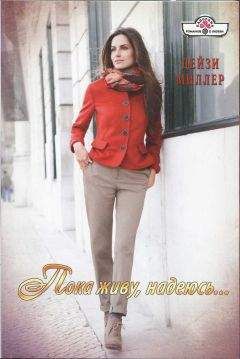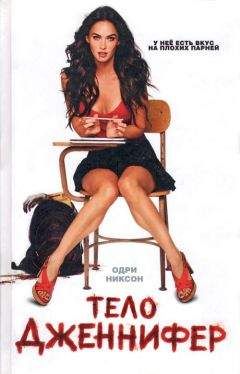Ричард Овери - Сталин и Гитлер
25. Hubert, Uniformierter Reichstag, pp. 58–63; M. Domarus (ed.) Hitler: Reden und Proklamationen 1932–1945: Band I, Triumph (Munich, 1965), p. 429; M. Moll (ed.) ‘Führer-Erlasse’, 1939–1945 (Stuttgart, 1997), pp. 49–50.
26. Labin, Stalin’s Russia, p. 31.
27. E. Lyons Assignment in Utopia (London, 1937).
28. E. van Ree The Political Thought of Joseph Stalin (London, 2002), pp. 148–9; see too J. Stalin Works (13 vols, Moscow, 1953–
55), vol. i., pp. 371–2 for his early views in ‘Anarchism or Socialism’, December 1906/January 1907. He distinguished two kinds of dictatorship – of the majority, ‘dictatorship of the street, of the masses, a dictatorship directed against all oppressors’, and a dictatorship of a minority or clique, which ‘tightens the noose around the neck of the majority’.
29. E. Mawdsley and S. White The Soviet Elite from Lenin to Gorbachev: The Central Committee and its Members 1917–1991 (Oxford, 2000), pp. 126–7; D. Volkogonov Stalin: Triumph and Tragedy (London, 1991), p. 217.
30. M. David-Fox and D. Hoffmann ‘The Politburo Protocols 1919–40’, Russian Review, 55 (1996), pp. 99–100; I. Pavlova The Strength and Weakness of Stalin’s Power’, in N. Rosenfeldt, B. Jensen and E. Kulavig (eds) Mechanisms of Power in the Soviet Union (London, 2000), p. 30; O. V. Khlevniuk Politburo – mekhanizmy politicheskoi vlasti v 1930-e gody (Moscow, 1996), pp. 330–31.
31. Mawdsley and White, Soviet Elite, p. 126; Khlevniuk, Politburo, pp. 288, 332–3; J. Löwenhardt, J. Ozinga and E. van Ree The Rise and Fall of the Soviet Politburo (London, 1992), pp. 34–5.
32. Khlevniuk, Politburo, pp. 246–52.
33. See, for example, the effects of a long Stalin holiday, from 30 June to 31 October 1935, in R. W. Davies, O. V. Khlevniuk, E. A. Rees, P. K. Liudmila and A. R. Larisa (eds) The Stalin – Kaganovich Correspondence 1931–1936 (New Haven, Conn., 2003), pp. 209–35.
34. T. J. Colton Moscow: Governing the Socialist Metropolis (Cambridge, Mass., 1995), p. 324–5, for Stalin’s close attention to the rebuilding of Moscow.
35. Khlevniuk, Politburo, pp. 290–91; see too M. Djilas Conversations with Stalin (New York, 1962), pp. 76–7: ‘It was at these dinners that the destiny of the vast Russian land, of the newly acquired territories, and, to a considerable degree, of the human race was decided.’ Djilas concluded, ‘At these dinners the Soviet leaders were at their closest, most intimate with each other.’
36. N. Rosenfeldt ‘“The Consistory of the Communist Church”: The Origins and Development of Stalin’s Secret Chancellery’, Russian History, 9 (1982), pp. 308–15, 318; N. Rosenfeldt, The Importance of the Secret Apparatus of the Soviet Communist Party during the Stalin Era’, in Rosenfeldt, Jensen and Kulavig, Mechanisms of Power, pp. 40–59; Pavlova, ‘Strengths and Weaknesses’, pp. 29–36. On Stalin’s regular access to secret intelligence on states abroad see V. V. Poznyakov ‘The Soviet Intelligence Services and the Government: Information and Military-Political Decisions from the early 1920s to the early 1950s’, in Rosenfeldt, Jensen and Kulavig, Mechanisms of Power, p. 107.
37. Rosenfeldt, ‘The Consistory of the Communist Church’, pp. 315–17, 321.
38. S. S. Montefi ore Stalin: the Court of the Red Tsar (London, 2003), pp. 59–60.
39. A. Knight Beria: Stalin’s First Lieutenant (London, 1993), pp. 172–3; Montefi ore, Court of the Red Tsar, p. 559.
40. Rosenfeldt, ‘The Consistory of the Communist Church’, pp. 320–23.
41. V. Serge The Case of Comrade Tulayev (London, 1968), pp. 257–8. See too V. Serge Memoirs of a Revolutionary 1901–1941 (Oxford, 1967), pp. 284 ff.
42. Kotze and Krausnick, ‘Es spricht der Führer’, p. 117.
43. J. Öhquist Das Reich des Führers (Bonn, 1943), p. 157.
44. H. Brausse Die Führungsordnung des deutschen Volkes: Grundlegung einer Führungslehre (Hamburg, 1940), pp. 54–60; Neesse, Die NSDAP, pp. 145–7: The Führer is the living embodiment of the majority of the people.’
45. Hubert, Uniformierter Reichstag, pp. 132–7.
46. Moll, Führer Erlasse, pp. 48–9; E. H. Schwaab Hitler’s Mind: a Plunge into Madness (New York, 1992), p. 43 cites Hans Frank: ‘In the formulation of the law, the historical will of the Führer is implemented, and the fulfi lment of this historical will of the Führer is not contingent on any prerequisites of the laws of the state.’
47. IWM, FO 645 Box 161, testimony of Baldur von Schirach, 15 September 1945, p. 5.
48. Kotze and Krausnick, ‘Er spricht der Führer’, p. 160.
49. D. Orlow The History of the Nazi Tarty. Vol. 2: 1933–1945 (Newton Abbot, 1973), pp. 333–6.
50. Orlow, History of the Nazi Party, pp. 422–3, 458–9, 466.
51. Hubert, Uniformierter Reichstag, pp. 57, 220–26.
52. A. Resis (ed.) Molotov Remembers: Inside Kremlin Politics (Chicago, 1993), pp. 38–9.
53. See the discussion of ‘weak dictator’ in Moll, Führer Erlasse, pp. 9–29; see too D. Rebentisch Führerstaat und Verwaltung im Zweiten Weltkrieg (Stuttgart, 1989).
54. H. Mommsen ‘Hitlers Stellung im nationalsozialistischen Herrschaftssystem’, in G. Hirschfeld and L. Kettenacker (eds) Der Führerstaaf: Mythos und Realität (Stuttgart, 1981), pp. 43–70.
55. See, for example, J. P. Duffy Hitler Slept Late And Other Blunders That Cost Him the War (New York, 1991), esp. ch 11 ‘profi le of a bungler’. On Hitler’s work pattern in the 1930s see K. Krause Zehn Jahre Kammerdiener bei Hitler (Hamburg, 1950), pp. 13–22, who describes his daily routine in the 1930s and early in the war.
56. See Pavlova, ‘Strengths and Weaknesses’, pp. 23–37; S. Pons ‘Stalinism and Party Organisation (1933–48)’, inj. Channon (ed.) Politics, Society and Stalinism in the USSR (London, 1998), pp. 93–4.
57. G. A. Bordiougov ‘The Transformation of the Policy of Extraordinary Measures into a Permanent System of Government’, in Rosenfeldt, Jensen and Kulavig, Mechanisms of Power, pp. 122–40.
58. See, for example, I. Kershaw ‘Working Towards the Führer: refl ections on the nature of the Nazi dictatorship’, in I. Kershaw and M. Lewin (eds) Stalinism and Nazism: Dictatorships in Comparison (Cambridge, 1997), pp. 88–107.
59. See, for example, S. Fitzpatrick ‘Blat in Stalin’s Time’, in S. Lovell, A. Ledeneva and A. Rogachevskii (eds) Bribery and Blat in
Russia: Negotiating Reciprocity from the Middle Ages to the 1990s (London, 2000), pp. 169–76; E. Belova ‘Economic Crime and Punishment’, in P. R. Gregory Behind the Façade of Stalin’s Command Economy (Stanford, 2001), pp. 133–42.
60. See, for example, Belova, ‘Economic Crime’, pp. 134–5; D. R. Shearer Industry, State, and Society in Stalin’s Russia, 1926–34 (Ithaca, NY, 1996), pp. 196–203, 208–10.
61. Resis, Molotov Remembers, p. 181.
62. Resis, Molotov Remembers, pp. 181–3.
63. Montefi ore, Court of the Red Tsar.
64. Ironically one of the few people he did address with the familiar ‘Du’ was Ernst Röhm, murdered on his orders in 1934.
65. R. J. Overy Interrogations: the Nazi Elite in Allied Hands (London, 2001), pp. 132–40.
66. Resis, Molotov Remembers, p. 183.
67. B. Bromage Molotov: the Story of an Era (London, 1956); Montefi ore, Court of the Red Tsar, pp. 34–5.
68. S. Beria Beria, My Father: Inside Stalin’s Kremlin (London, 2001), p. 165; Volkogonov, Triumph and Tragedy, pp. 249–52.
69. Davies et al., The Stalin – Kaganovich Correspondence, pp. 21–36.
70. Resis, Molotov Remembers, p. 232.
71. Beria, Beria, My Father, p. 160; on Zhdanov’s death see J. Brent and V. Naumov Stalin’s Last Crime: the Plot against the Jewish Doctors, 1948–1953 (London, 2002).
72. Beria, Beria, My Father, pp. 141–2.
73. T. H. Rigby ‘Was Stalin a Loyal Patron?’ Soviet Studies, 38 (1986), pp. 313–14, 17–19.
74. See A. Kube Pour le merite und Hakenkreuz: Hermann Göring im Dritten Reich (Munich, 1986).
75. R. Reuth Goebbels (London, 1993).
76. T. Junge Until the Final Hour: Hitler’s Last Secretary (London, 2003), p. 94. On Himmler, P. Padfi eld Himmler: Reichsführer SS (London, 1990).
77. F. Genoud (ed.), The Testament of Adolf Hitler: the Hitler – Bormann Documents (London, 1961), p. 104.
78. IWM, Speer Collection, Box S369, FIAT Report 19, ‘Adolf Hitler’, pp. 3–4.
79. P. Huttenberger ‘Nationalsozialistische Polykratie’, Geschichte und Gesellschaft, 2 (1976), pp. 419–42; K. Hildebrand ‘Monokratie oder Polykratie? Hitlers Herrschaft und das Dritte Reich’, in Hirschfeld and Kettenacker, Der ‘‘Führer-straaf, pp. 73–96.
80. Beria, Beria, My Father, p. 157; Resis, Molotov Remembers, p. 181.
81. IWM, Speer Collection, Box 5369, FIAT Report, 19, p. 3.
82. Dollmann in PRO, WO 218/4475, interrogation of Eugen Dollmann (August 1945), p. 1; G. W. Price I Know These Dictators (London, 1937), pp. 9–10: ‘His bearing remains tranquil until his attention is aroused by some political remark. Then his eyes light up, his relaxed frame stiffens, and in a hoarse, sombre voice, he pours forth a voluble reply.’
83. IWM, Speer Collection, Box S369, FIAT Report 19, Albert Speer ‘Adolf Hitler’ 19 October, 1945, p. 9.
84. Junge, Until the Final Hour, p. 85.
85. Reichsgesetzblatt, 1936, Part I, p. 887; BA-B, R26 IV/4, ‘Sitzung des kleinen Ministerrats’, 21 October 1936, p. 2: ‘the full power of the Minister President [Göring] is unlimited’. Heinrich Lammers, head of the Reich Chancellery, described the nature of this power after the war: ‘Göring… under whose jurisdiction all Government and Party units were subordinate’. See IWM, FO645 Box 159, ‘Notes on Legislation and Measures for the Defence of the Reich’, 17 October, 1945.
86. IWM, Speer Collection, Box S369, FIAT Report 19, Part III, ‘Exploitation of Albert Speer’, pp. 9–10.
87. Volkogonov, Triumph and Tragedy, pp. 240–41.
88. Resis, Molotov Remembers, pp, 179–80.
89. Krause, Zehn Jahre, p. 22.
90. Resis, Molotov Remembers, p. 180.
91. Resis, Molotov Remembers, p. 29.
92. R. J. Overy Goering the ‘Iron Man’ (London, 1984), pp. 59–75.
93. G. P. Megargee Inside Hitler’s High Command (Lawrence, Kans., 2000), pp. 44–8; IWM, FO 645, Box 158, memorandum by Wilhelm Keitei ‘The position and powers of the Chief of OKW, 9 October 1945, pp. 1–4; W. Deist ‘Die Wehrmacht des Dritten Reiches’, in W. Deist et al. Das Deutsche Reich und der Zweite Weltkrieg: Band I (Stuttgart, 1979), pp. 501–20.
94. ‘Weisung Adolf Hitlers an die Wehrmacht von 3 April 1939’, H. Michaelis and E. Schraepler (eds) Ursachen und Folgen vom deutschen Zusammenbruch 1918 bis 1945 (Berlin, 1967), vol. xiii, p. 212.
95. See R. J. Overy ‘Strategic Intelligence and the Outbreak of the Second World War’, War in History, 5 (1998), pp. 456–64.
96. IWM, Case XI, document book ib, p. 133, Fritzsche affi davit, 29 June 1948; E. Fröhlich (ed.) Die Tagebücher von Joseph Goebbels: Teil I, Aufzeichnungen 1923–1941, vol. vii (Munich, 1998), p. 87.




